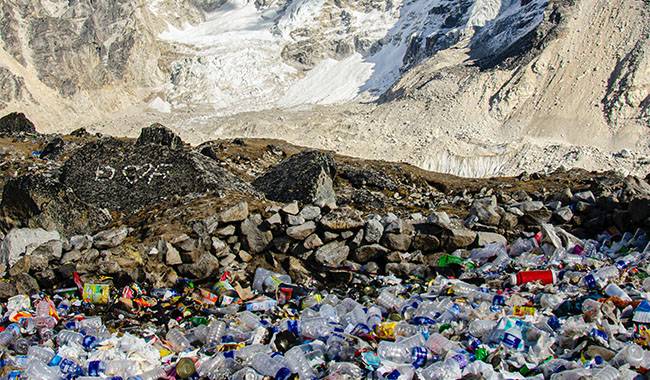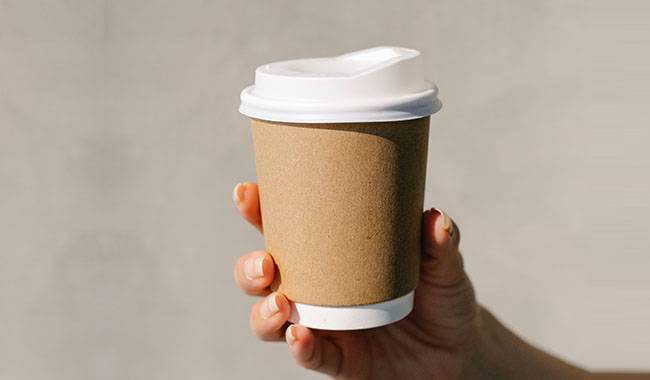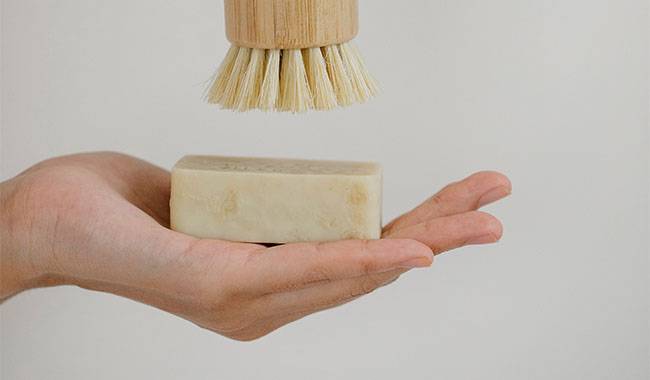
It seems obvious: if you have the strength to carry food all the way, why not just take your backpack with you? But many people would rather burn, bury or simply leave their trash in the bush to avoid putting it in their backpacks. For those of you who know you shouldn’t throw your trash away, but don’t want to carry it with you, here are my principles for reducing trash while camping. You will learn more about How to Deal With The Hiking Garbage Without Destroying The Environment by LCNOutdoors article.
It all started with optimizing my food layout: I modified the menu and the way I pack. It turns out that if you take the time to prepare and pack your food at home, you can generate less trash on your hike, and if you replace disposable packaging with reusable packaging, you won’t have to throw anything away. As a result, after a week of solo camping, I had accumulated a fist-sized bag of trash.
I tried the same approach on a group sports camping trip where I was the janitor. I didn’t get rid of the trash completely, but it was a lot less than usual.
Modify Your Hiking Menu
Give up canned food. All the popular tourist spots are piled high with canned goods. Many tourists are too lazy to take them with them, so at best they spit them out and put them under rocks. This junk won’t decay for decades – we found cans of 1970s stew in the mountains. In fact, camping menus can be completely free of canned food with nothing to lose.
A can of stew or fish contains only half of the actual product; the rest is water and a can that no one wants to carry around. You can use dried or freeze-dried meat, pemmican, or dried fish instead of canned food. Then you won’t have to carry extra water and packaging, and these products are generally healthier than canned foods.
Avoid foods that take a long time to cook. The longer the cooking process, the more gas you use and the more gas cylinders that go into the landfill. In theory, gas cylinders can be recycled or refilled, but if you have to fly to a camping destination, this is not an option. Theoretically, gas cylinders can be recycled or refilled, but if you are traveling by air, this is not an option.
Use Reusable Packaging
About 10 years ago, our hiking club used to tape food bags together so the bags wouldn’t tear in the pack and cereal wouldn’t spill. We also used to wrap cookies and waffles in ten layers of tape so they wouldn’t crumble. Today that tradition has almost disappeared, but some visitors still do it or use more bags for safety. So that’s a lot of packaging alone.
I throw away the extra packaging when I pack at home. I put all the products for each group of one meal in one bag. If it’s sultanas oatmeal, the bag with the sultanas already has the right amount of sultanas in it, and if it’s a homemade soup, then all the ingredients are there at once. Such preparation takes a lot of time, but the result is that instead of having a lot of bags, I have exactly the right amount for the meal. It’s also convenient: I don’t have to explain to the staff on duty what to use for the soup and how much to put in, everything is in one bag.
I only pack separately those foods that need to be cooked longer than others, or, on the contrary, don’t need to be cooked at all: jerky, spices, and salt and sugar.
For packaging, I try to choose reusable packaging or use reusable plastic containers. For example, I find that macaroni and cereal come in Ziploc bags. These bags are convenient and sturdy – now I use them for tea and cereal, and instead of throwing them away after a trip, I reuse them. I keep spices and jerky in plastic jars of dried vegetables – it’s easy to measure out the right amount that way. Clear milk bottles also work well.
I can’t say I’ve eschewed disposable bags 100%, but I choose reusable alternatives whenever possible. I put them in a sturdy cloth bag so they don’t tear in my backpack.
I take candy that won’t break and doesn’t require a lot of packaging. I long ago ruled out the cookie, waffle and gingerbread menu: if they weren’t packed in thick cardboard, they would quickly turn to crumbs. Instead, I brought toffee bars, sorbets, gingerbread, chocolate bars and candy. I bought the toffee and sorbet by weight, unwrapped, in a bag – they were easily divided into the required portions, so no additional filler bags were needed. I just have to put up with the candy and candy bar wrappers and carry them around with me, but they take up very little space.
I only drink loose leaf tea. Many visitors use tea bags while camping because it’s convenient. Then the tea bags themselves are thrown away, thinking they are organic. But this is not the case – many tea bags are not made of paper, but of thermoplastic materials and other synthetic materials. Not only are they not biodegradable, but they also release microplastic particles into the water, which enter the body with the tea. This was proven by Canadian scientists in a recent study. Therefore, this tea is not good for people or nature.
You can reduce the amount of garbage when you buy groceries. Cereals, pasta, dried fruits and sweets can be purchased by weight and in their own containers. Cashiers in supermarkets are slowly getting used to seeing cloth bags instead of pre-packaged bags and are hardly surprised.
Now, it’s easy to find eco-friendly bags for grocery shopping, or sew your own. I have a few mesh bags – for pasta, dried fruit and candy.
Find Alternatives To Disposables

- Use flasks instead of plastic bottles.
The easiest thing you can do for the environment is to purchase a reusable water bottle. A good water bottle will last you for years and will come in handy not only when camping, but for travel and everyday life. I like reusable padded water bottles – they don’t take up much space when they’re empty.
- Use batteries instead of batteries.
Everyone brings spare batteries for their flashlights, navigation devices, or walkie-talkies when they’re camping. But not everyone knows they shouldn’t be thrown away. Batteries contain heavy metals that break down poison soil and water and release dangerous toxins in combustion. That’s why you should dispose of used batteries at a recycling center – there are collection points in all major cities. And, so that you don’t have to buy new batteries before each trip and then look for a collection point, you should replace them with rechargeable batteries and simply recharge them. - Bag items instead of pouches.
On camping trips, there is bound to be at least one participant who puts things in plastic sandbags. Not only is this environmentally unfriendly, but it will annoy everyone in the morning. A more civilized solution is a garment bag, which won’t tear, won’t rustle, and will last for many years. - a dishwashing brush or eco-friendly sponge.
A regular foam pad will end up in a landfill after one trip, but a brush can last for years. And it’s easier to clean burnt food in a frying pan with a brush. Another eco-friendly option is the sponge. This is a plant in the Cucurbitaceae family that decomposes well in the ground. At the end of the hike, you can simply bury the sponge. - For girls: Use a menstrual cup instead of disposable pads.
This is the best thing ever invented for female tourists. They’ve been used in the West for a long time, but we’re only now starting to see the benefits. And the advantages are many. Often, when a trip falls on a “red day on the calendar” it is a disaster. First, it’s inconvenient, and second, classic feminine hygiene products are unnecessary junk that must somehow be hidden and carried because they don’t break down. The bowl solves all these problems: it is safe and reusable. Just change it in the morning and at night – which is convenient because there’s always water and privacy in camp.
Tip
One more point about biodegradable plastics – they are now used to make disposable bags and wet wipes and are seen as an environmentally friendly alternative. The term “biodegradable” refers to two types of polymers: synthetic (or oxidatively degradable) and natural. The former eventually breaks down into microplastic particles, at which point biodegradation usually ends – the microplastics then enter the soil, water and further down the food chain. This type of plastic will not be recycled. The second type of polymer is made from food ingredients, such as starch or cellulose, and does break down, but only in industrial compost. Our country does not yet have a system for collecting and recycling organic waste. Biodegradable plastics have proven to be no better than conventional plastics in the American reality.
Try Unpackaged Toiletries

To make your pack lighter, it’s recommended that you bring disposable shampoo packs with you on your camping trip. But there is a waste-free alternative: solid shampoo without packaging. It’s not very convenient, but you don’t have to carry around unnecessary water and packaging.
Then there’s solid deodorant. Both can be purchased by weight at eco-cosmetic stores. A big plus is that you can cut off any size piece and don’t have to carry too much. When I go camping, I put my soap, shampoo, and deodorant in a regular soap dish – three small pieces fit inside.
The next level is hard toothpaste. These are tablets based on fine cellulose fibers that you can chew and brush your teeth with a toothbrush as usual. I’m not at this level yet; I use a small tube of toothpaste and refill as needed.
Burn The Trash Or Take It Away?
Whether or not you can burn your trash while camping is a controversial topic. On the one hand, burning certain types of plastic can release harmful substances. On the other hand, sometimes it is better to burn small trash than to leave it on the mountain.
For example, it is difficult to prove definitively which is more harmful – the emissions from burning wet wipes or the same wet wipes lying in landfills or, worse, lying under bushes and rocks. Such wipes do not decompose – they consist of a mixture of synthetic cellulose and plastic fibers. It is also difficult to recycle them; currently, they are not accepted for recycling. Therefore, incineration is not the worst option – you won’t burn this waste on an industrial scale. By the way, tissue burns quickly and easily and burns without a trace.
Then there are cigarette butts. Not everyone realizes that these areas non-biodegradable as plastic bottles. Cigarette filters are usually made of cellulose acetate, which is a type of plastic. When decomposed, it breaks down into microplastics, the particles of which pass through the soil into the water – exactly what we consider the cleanest mountain water and drink while camping. That’s why you should always take your cigarette butts with you or burn them with fire.
Generally speaking, there are different types of plastic waste. To understand how best to dispose of it and whether it can be incinerated, it’s worth looking at the label. On the package, look for the triangle with three arrows. Inside the triangle number and below them are the initials. Sometimes there are only abbreviations.
The letter PE stands for polyethylene. PET, PEHD, PELD, or LDPE, and the numbers 1, 2, and 4 are it. The letters PP and the number 5 stand for polypropylene. The main plastic waste that accumulates during camping is made of polyethylene or polypropylene. It is recyclable and non-toxic when burned.
PVC and the number 3 are polyvinyl chlorides. PVC-based plastics release toxic substances called dioxins when burned. Less common types of camping trash are pill bubbles, shrink wrap from yogurt bottles and some cosmetic bottles. You should not burn this trash, but rather take it with you and throw it in the trash.
If you use all of the methods described here to reduce your trash, you will hardly need to burn anything. The only things you will be left with are bags, candy wrappers, and wet wipes. Some may be turned into recycling or burned in a large fire to ensure it burns without a trace. Some visitors burn trash at the campground instead of using firewood, and piles of unburned trash ruin the landscape and environment of the campground. Such garbage does not decompose.
How not to carry unnecessary garbage in your backpack and not to harm nature.
- Main rule: reduce the amount of disposable packaging and look for reusable alternatives to disposable items.
- Avoid canned foods and dishes that take a long time to cook.
- Pack products in reusable containers.
- Use water bottles, batteries, and durable garment bags.
- Buy unpackaged cosmetics and reusable hygiene products.
- Don’t burn garbage unnecessarily or anywhere.